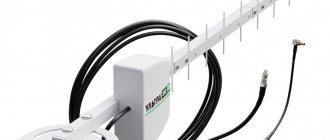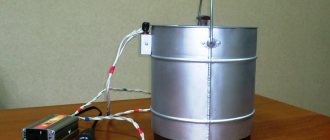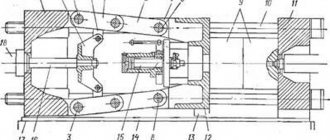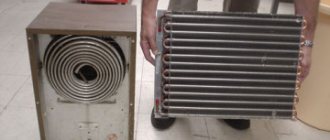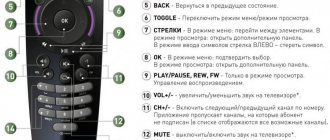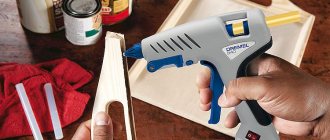Refrigeration equipment has become so firmly established in our lives that it is even difficult to imagine how we could manage without it. But classic refrigerant designs are not suitable for mobile use, for example, as a traveling cooler bag.
Cooler bag with Peltier elements, no compressor, no need for freon or other refrigerants
For this purpose, installations are used in which the operating principle is based on the Peltier effect. Let's briefly talk about this phenomenon.
What it is?
This term refers to a thermoelectric phenomenon discovered in 1834 by the French naturalist Jean-Charles Peltier. The essence of the effect is the release or absorption of heat in the area where dissimilar conductors through which electric current passes are in contact.
In accordance with the classical theory, there is the following explanation for the phenomenon: electric current transfers electrons between metals, which can accelerate or slow down their movement, depending on the contact potential difference in conductors made of different materials. Accordingly, with an increase in kinetic energy, it is converted into thermal energy.
On the second conductor, a reverse process is observed, requiring replenishment of energy, in accordance with the fundamental law of physics. This occurs due to thermal vibration, which causes cooling of the metal from which the second conductor is made.
Modern technologies make it possible to produce semiconductor elements-modules with maximum thermoelectric effect. It makes sense to briefly talk about their design.
Thermoelectric module
Peltier elements are used in a device consisting of many p and n type semiconductors. Unlike transistors and diodes, transition regions are located at the metal-semiconductor interface. In the Peltier module, a large number of elements are located between ceramic plates, which makes the device more powerful.
Each element contains 4 junctions at the semiconductor-metal contact. When the electrical circuit is closed, electrons move from the battery negative to the positive, passing through all transitions.
At the first transition of the thermoelectric module (TEM) between the copper bus and the p-semiconductor, heat is released in the latter, since the flow of charges enters a region with lower energy.
At another contact in the semiconductor, energy is absorbed as electrons are “sucked” by an electric field that matches the direction of their movement. There the cooling process takes place.
At the third contact, the energy of the electrons is absorbed because the n-type semiconductor has more energy than the metal.
At the fourth transition, heat is released as the electrons are again inhibited by the electric field.
Thus, heat is generated on one side and cooled on the other. On one element this phenomenon will not be noticeable, but the Peltier module, the elements of which are located between two ceramic plates, creates a significant temperature difference.
The module can be used as an electricity generator if the plates are maintained at different temperatures. In this case, each Peltier thermoelectric element is connected in series to the neighboring one through copper jumpers, and their currents are summed.
Design and principle of operation
Modern modules are a structure consisting of two insulating plates (usually ceramic), with serially connected thermocouples located between them. A simplified diagram of such an element can be found in the figure below.
Design of a modular Peltier element
Designations:
- A – contacts for connecting to a power source;
- B – hot surface of the element;
- C – cold side;
- D – copper conductors;
- E – semiconductor based on p-junction;
- F – n-type semiconductor.
The design is made in such a way that each side of the module is in contact with either pn or np junctions (depending on polarity). Contacts pn heat up, np contacts cool (see Fig. 3). Accordingly, a temperature difference (DT) occurs on the sides of the element. To an observer, this effect will look like a transfer of thermal energy between the sides of the module. It is noteworthy that changing the power polarity leads to a change in hot and cold surfaces.
Rice. 3. A – hot side of the thermoelement, B – cold side
Will need
- Peltier elements - 6 pieces. The TEC1-12705 model is designed for 12 V and 60 W, you can buy it here - AliExpress.
- A power supply from a computer or any other with 12 V and a power of at least 400 W, you can buy here - AliExpress.
- Wires 2.5 sq. mm. - a couple of meters.
This is from the main one, see the text for other details and tools.
Specifications
The characteristics of thermoelectric modules are described by the following parameters:
- cooling capacity (Qmax), this characteristic is determined based on the maximum permissible current and the temperature difference between the sides of the module, measured in Watts;
- maximum temperature difference between the sides of the element (DTmax), the parameter is given for ideal conditions, the unit of measurement is degrees;
- permissible current required to ensure maximum temperature difference - Imax;
- the maximum voltage Umax required for the current Imax to reach the peak difference DTmax;
- internal resistance of the module – Resistance, indicated in Ohms;
- efficiency coefficient - COP (abbreviation from English - coefficient of performance), essentially this is the efficiency of the device, showing the ratio of cooling to power consumption. For inexpensive elements this parameter is in the range of 0.3-0.35, for more expensive models it approaches 0.5.
Marking
Let's look at how typical module markings are deciphered using the example of Figure 4.
Figure 4. Peltier module marked TEC1-12706
The marking is divided into three meaningful groups:
- Element designation. The first two letters are always unchanged (TE), indicating that this is a thermoelement. The next one indicates the size, there may be the letters “C” (standard) and “S” (small). The last number indicates how many layers (cascades) there are in the element.
- The number of thermocouples in the module shown in the photo is 127.
- The rated current is in Amperes, for us it is 6 A.
The markings of other models of the TEC1 series are read in the same way, for example: 12703, 12705, 12710, etc.
Result of work
The air conditioner is quite powerful; after all, 6 Peltier modules are used. The entire electrical power was 360 W, which is not small. Although it cannot be compared with a heat pump due to its very low efficiency. But even this model is enough to cool a small room. Here is the result when running for the first time: the initial room temperature is 24 degrees Celsius.
After about an hour of work, the temperature dropped to 20 degrees, which is, in my opinion, an excellent result!
Application
Despite the rather low efficiency, thermoelectric elements are widely used in measuring, computing, and household appliances. Modules are an important operating element of the following devices:
- mobile refrigeration units;
- small generators to generate electricity;
- cooling systems in personal computers;
- coolers for cooling and heating water;
- dehumidifiers, etc.
Let us give detailed examples of the use of thermoelectric modules.
Refrigerator using Peltier elements
Thermoelectric refrigeration units are significantly inferior in performance to compressor and absorption analogues. But they have significant advantages, which makes their use advisable under certain conditions. These advantages include:
- simplicity of design;
- vibration resistance;
- absence of moving elements (except for the fan blowing the radiator);
- low noise level;
- small dimensions;
- ability to work in any position;
- long service life;
- low energy consumption.
These characteristics are ideal for mobile installations.
Thermoelectric auto-refrigerator installed in the car interior
Peltier element as an electricity generator
Thermoelectric modules can work as electricity generators if one of their sides is subjected to forced heating. The greater the temperature difference between the sides, the higher the current generated by the source. Unfortunately, the maximum temperature for the thermal generator is limited; it cannot be higher than the melting point of the solder used in the module. Violation of this condition will lead to failure of the element.
For mass production of thermal generators, special modules with refractory solder are used; they can be heated to a temperature of 300°C. In ordinary elements, for example, TEC1 12715, the limit is 150 degrees.
Since the efficiency of such devices is low, they are used only in cases where it is not possible to use a more efficient source of electrical energy. However, 5-10 W thermal generators are in demand among tourists, geologists and residents of remote areas. Large and powerful stationary installations powered by high-temperature fuel are used to power gas distribution units, meteorological station equipment, etc.
Thermoelectric generator B25-12 (M) 12 volt, 25 watt
To cool the processor
Relatively recently, these modules began to be used in CPU cooling systems of personal computers. Considering the low efficiency of thermoelements, the benefits of such structures are rather doubtful. For example, to cool a heat source with a power of 100-170 W (corresponding to most modern CPU models), you will need to spend 400-680 W, which requires installing a powerful power supply.
The second pitfall is that an unloaded processor will release less thermal energy, and the module can cool it below the dew point. As a result, condensation will begin to form, which is guaranteed to damage the electronics.
Those who decide to create such a system on their own will need to carry out a series of calculations to select the power of the module for a specific processor model.
Based on the above, using these modules as a CPU cooling system is not cost-effective; in addition, they can cause computer equipment to fail.
The situation is completely different with hybrid devices, where thermal modules are used in conjunction with water or air cooling.
Thermoelectric cooler Armada
Hybrid cooling systems have proven their effectiveness, but the high cost limits the circle of their admirers.
Air conditioner based on Peltier elements
Theoretically, such a device will be structurally much simpler than classic climate control systems, but it all comes down to low performance. It’s one thing to cool a small volume of a refrigerator, another thing to cool a room or the interior of a car. Air conditioners using thermoelectric modules will consume more electricity (3-4 times) than equipment running on refrigerant.
As for using it as a car climate control system, the power of a standard generator will not be enough to operate such a device. Replacing it with more efficient equipment will lead to significant fuel consumption, which is not cost-effective.
In thematic forums, discussions on this topic periodically arise and various home-made designs are considered, but a full-fledged working prototype has not yet been created (not counting the air conditioner for a hamster). It is quite possible that the situation will change when modules with more acceptable efficiency become widely available.
For cooling water
The thermoelectric element is often used as a coolant for water coolers. The design includes: a cooling module, a thermostat-controlled controller and a heater. This implementation is much simpler and cheaper than a compressor circuit; in addition, it is more reliable and easier to operate. But there are also certain disadvantages:
- water does not cool below 10-12°C;
- cooling takes longer than its compressor counterpart, therefore, such a cooler is not suitable for an office with a large number of employees;
- the device is sensitive to external temperature, in a warm room the water will not cool to the minimum temperature;
- Installation in dusty rooms is not recommended, as the fan may become clogged and the cooling module may fail.
Tabletop water cooler using Peltier element
Air dryer based on Peltier elements
Unlike an air conditioner, the implementation of a dehumidifier using thermoelectric elements is quite possible. The design is quite simple and inexpensive. The cooling module lowers the temperature of the radiator below the dew point, as a result, moisture contained in the air passing through the device settles on it. The settled water is discharged into a special storage tank.
A simple and inexpensive Chinese dehumidifier using Peltier elements
Despite the low efficiency, in this case the efficiency of the device is quite satisfactory.
XRow-600A Peltier element dryer
I have a personal use dehumidifier of the compression type. I bought it for a new apartment to dry the air. Helped me a lot at the time. I was forced to thoroughly study this topic. That is why I was interested in the new device. I wanted to see what a dehumidifier based on a Peltier element is like. Perhaps it’s interesting not only to me. First, the theories, just a little.
An air dehumidifier is a device designed to reduce air humidity.
Most dryers are of the compression type. The operating principle is based on the condensation of water vapor contained in the air on the surfaces of the evaporator at a low temperature. Essentially, a dehumidifier is an air conditioner that removes heat into the same room. This is how he arrived. Box with handle, slightly dented during transportation.
Inside was the dehumidifier itself in a simple plastic bag (the device was not damaged),
small instructions in six languages
(posted the English version) and the adapter in a separate box.
Adapter with European plug and 9 V/2.5 A output.
It is connected to the dryer through a connector very similar to the plug used on Soviet electric shavers. At the top there are two indicators and an on/off button.
Small in size. A little more than a one and a half liter jar.
Compared to my dehumidifier, it’s actually miniature.
I weighed it just in case. 875
The moisture collection tank without any latches, extends without effort. Occupies about a third of the total volume.
Somewhat reminiscent of a microwave container.
The cover cannot be removed.
On the lid you can see a funnel with a hole, a float (in the bottom center) and a plug through which moisture is removed.
The stopper is made using the non-falling principle.
If you remove the reservoir, you can see two small switch wheels.
These are a kind of software switches for controlling the dehumidifier.
If you click on one of them, which checks for the presence of a tank, the dehumidifier will start working. If you press the second one, the dryer will turn off and the yellow full tank LED will light up. Those. The dehumidifier will not turn on if the tank is not inserted and if it is full. During operation, heated and dried air exits through the openings at the top.
The algorithm of work was explained. It's time to look what's inside.
To do this, I unscrew four screws at the back and two at the bottom.
This is a switch board.
It has two status indicators and connectors for connecting 12 V voltage, a fan, a Pelte element and mode switches.
I unscrewed two more screws. Hidden under the protective strip were two wires leading from the power connector to the switching board (plus green).
The dehumidifier circuit is very simple. The only thing that needs to be clarified is the purpose of the switches: 1 - Power on/off switch (located in plain sight, next to the LEDs). 2 — Switch for the presence of a tank (if there is no tank, the circuit is de-energized). 3 — Tank full switch. If the tank is full, it turns off the Pelte element and the fan from the power supply, and the yellow LED lights up. I unscrew four more screws and take out the “working part”.
This is a cooler. Moisture condenses here. A fan is attached to the “hot” side.
The condenser radiator (not to be confused with an electric capacitor) is drawn to the Peltier element through thermal paste. The screws are plastic. And these are software switches. The switches are the simplest, only with wheels.
I'll check some electrical parameters. Power consumption of the power supply unit (adapter) at idle is 0.9 W. Power consumption from the network when the dehumidifier is operating is 23.7 W.
The voltage at the output of the adapter is 9.178 V at XX, and sags a little under load.
No wonder. Current consumption is more than 2 A.
The fan current consumption is 0.182 A. The Peltier element current consumption is not so stable and varies within 1.8 - 2 A.
I'm assembling the dehumidifier. It's time to test. But first, a little theory. How does a compression dryer work?
The principle of operation of the dehumidifier is simple, like everything ingenious. Air dehumidification takes place in three stages: 1. The device draws in air using a powerful fan and cools it using a heat exchanger. As a result, water vapor is converted into condensate (water droplets). 2. Condensate enters the reservoir (water collector). 3. The dried air is reheated and supplied back to the room.
The cycle is repeated continuously until the humidity in the room reaches the optimal value.
The principle of operation of an air dryer using the example of my Mitsubishi Electric MJ-E16VX (diagram) And here are the characteristics of my Mitsubishi:
When the windows in the apartment were sweating, he helped me.
A short digression about humidity
This is what windows look like when it’s below zero outside and there’s high humidity in the house.
If your windows don’t sweat in winter, it means your humidity is below 40% (from practice), you need to take into account the temperature “outside”. For those who live in anthills with central heating, this picture is unfamiliar. I lived in such a house myself. Minimum thermal insulation. Accordingly, moisture leaves along with heat. For those who live in modern houses with good thermal insulation, individual heating and modern double-glazed windows, this picture occurs. Each person exhales up to 1 liter of moisture per day. And the moisture needs to go somewhere. Otherwise, excess moisture will settle on colder elements (cold pipes, fittings, windows...). For those interested, take a look at GOST 30494-96 “Residential and public buildings.” Pay attention to the optimal humidity in winter. This is not 60% as many people think! 60% is just acceptable, you can’t go higher, you have to fight. Otherwise - mold, unpleasant odors in the apartment, health problems...
Now let’s remember what humidity is. Who knows, feel free to skip this paragraph. Who cares what is written on Wikipedia?
Let's look at the graph of the solubility of water (moisture) in air depending on temperature.
The higher the temperature, the more moisture can dissolve in the air. For example, at a temperature of minus 5 degrees, 3.25 g of moisture can dissolve in the air, and at 22 degrees, 19.44 g. Therefore, when opening windows in winter, we not only ventilate, but also dry the apartment. Absolute humidity does not change, but relative humidity decreases. I'll try to explain why. Example: Let it be minus 5 degrees outside and 100% humidity. From the table we see that 1 cubic meter of air under these conditions contains only 3.25 g of moisture (absolute humidity). The air enters the apartment and heats up to 22 degrees. The amount of moisture does not change and remains 3.25 g. But at 22 degrees, already 19.44 g of water can dissolve in the air - this is 100%, and 3.25 g is 16.7% of 19.44 g. The air becomes dry, with humidity 16.7% (relative humidity). This is why the skin dries and itches. Too dry. This is a problem for those who open windows too often in winter, or have poor thermal and waterproofing of the apartment (house). When I lived in a panel house with central heating, the door to the bathroom was difficult to close in the summer and easy to close in the winter. I never thought about it before. What to do in this case? Moisturize!!! You don’t need to learn how to do this. Everybody knows. Well, what to do in the off-season, when the temperature “outside” is above 15 degrees, and the humidity outside is close to 100%? Here, indirect methods for determining humidity (moisture settling on windows) will not help. But the hygrometer will show it. Ventilation is no longer enough here. It can also make it worse. Here you need a desiccant, or endure (endure all hardships and hardships with dignity and honor...). And here is an excerpt from the instructions for the Mitsubishi dehumidifier.
I'm just sharing my experience. A good dehumidifier costs good money (health also costs money while it lasts. If there is no health, money will no longer help). This also needs to be taken into account. Personally, in the off-season, I collect up to 3 liters of distillate per day (on especially “lucky” days). He especially helped me when we just moved into a new apartment. The house was damp, everything was glued and plastered, but you had to live. Well, in the summer air conditioning helps. It also dehumidifies the air, of course, if it is not turned on for heating. My air conditioner has an interesting mode, but I can’t say anything about other air conditioners: In this mode, the air conditioner most effectively removes moisture from the apartment (in this mode it also reduces the temperature). Well, excessive humidity causes much more discomfort than high temperature (from personal experience). This is the answer to the question of what to do after finding out the humidity in the house.
Let's return to the author of the review. I decided to test it in the bathroom. At this time of year we dry clothes on the balcony. But for the sake of experiment, I curtained the entire bathroom to capacity and turned on the dehumidifier.
And he failed in his task. The humidity has risen to its maximum. The hygrometer gave up 99% The device is weak for such tasks. Moisture collects in the tank very slowly indeed. 250ml per day is its real limit. The manufacturer did not deceive. And if you consider how many liters of moisture were in the bathroom, these are liters, not milliliters. We can finish here. I was hoping for a miracle, but miracles don't happen. Wikipedia agrees with me.
The humidity has risen to its maximum. The hygrometer gave up 99% The device is weak for such tasks. Moisture collects in the tank very slowly indeed. 250ml per day is its real limit. The manufacturer did not deceive. And if you consider how many liters of moisture were in the bathroom, these are liters, not milliliters. We can finish here. I was hoping for a miracle, but miracles don't happen. Wikipedia agrees with me.
The advantage of the Peltier element is its small size, the absence of any moving parts, as well as gases and liquids. By reversing the direction of the current, both cooling and heating are possible - this makes it possible to thermostat at ambient temperatures both above and below the thermostat temperature. Another advantage is the absence of noise. The disadvantage of the Peltier element is its lower efficiency than that of compressor refrigeration units using freon, which leads to high power consumption to achieve a noticeable temperature difference. Despite this, developments are underway to increase thermal efficiency, and Peltier elements have found wide application in technology, since temperatures below 0 °C can be achieved without any additional devices. The main problem in constructing Peltier elements with high efficiency is that free electrons in a substance are simultaneously carriers of both electric current and heat. The material for the Peltier element must simultaneously have two mutually exclusive properties - it conducts electric current well, but poorly conducts heat.
The only possible place for using this dehumidifier, I can imagine, is drying outerwear lockers after rain.
The product was provided for writing a review by the store. The review was published in accordance with clause 18 of the Site Rules.
How to check the Peltier element for functionality?
The simplest and most reliable method is tactile. It is necessary to connect the module to the appropriate voltage source and touch its different sides. For a working element, one of them will be warmer, the other colder.
If you don’t have a suitable source at hand, you will need a multimeter and a lighter. The verification process is quite simple:
- connect the probes to the module terminals;
- bring the lit lighter to one of the sides;
- We observe the readings of the device.
In the working module, when one of the sides is heated, an electric current is generated, which will be displayed on the device display.
Air conditioner installation
An air conditioner can be installed in any window. To do this, such a bracket is made from a shaped aluminum profile.
Which will clearly rest on the doors and prevent the entire structure from falling out.
To close the gap not to the closed window, a strip of polycarbonate or other plastic is cut along the width of the air conditioner. And is inserted into the window groove.
We press the entire structure with the equalizer.
As you can see, I have a sliding window, but you will have to come up with your own mounting design. The main thing is that one side of the device is on the street, and the other at home. And there was no draft through the cracks.
How to make a Peltier element with your own hands?
It is almost impossible to make a homemade module at home, especially since there is no point in doing so, given their relatively low cost (about $4-$10). But you can assemble a device that will be useful on a hike, for example, a thermoelectric generator.
Connection diagram for a homemade thermogenerator
To stabilize the voltage, it is necessary to assemble a simple converter on the L6920 IC chip.
Schematic diagram of a voltage converter
The input of such a converter is supplied with a voltage in the range of 0.8-5.5 V, and at the output it will produce a stable 5 V, which is quite enough to recharge most mobile devices. If a conventional Peltier element is used, it is necessary to limit the operating temperature range of the heated side to 150 °C. To avoid the hassle of tracking, it is better to use a pot of boiling water as a heat source. In this case, the element is guaranteed not to heat above 100 °C.
Operating principle, advantages and disadvantages
The operating principle of the Peltier element is based on the physical processes that occur when current flows through the contact of two conductive materials (semiconductors). When current flows in the forward direction, the contact point cools; when current flows in the reverse direction, it heats up.
The undoubted advantages of Peltier elements include simplicity of design, the absence of mechanical moving parts and associated operating noise, as well as gases and liquids necessary for operation. But you have to pay for this with a low level of efficiency, compared to freon coolers, and an increase in power consumption. To increase efficiency, it is necessary to use a material that has mutually exclusive properties - good current conductivity, but low thermal conductivity, which is also a problem.
In addition, acceptable efficiency of Peltier elements is possible only at relatively low ambient temperatures (up to +30°C), after which the cooling capabilities are sharply reduced, and at +40°C they practically disappear. On the other hand, it is impossible to do without Peltier air conditioners where traditional cooling methods cannot be used.


